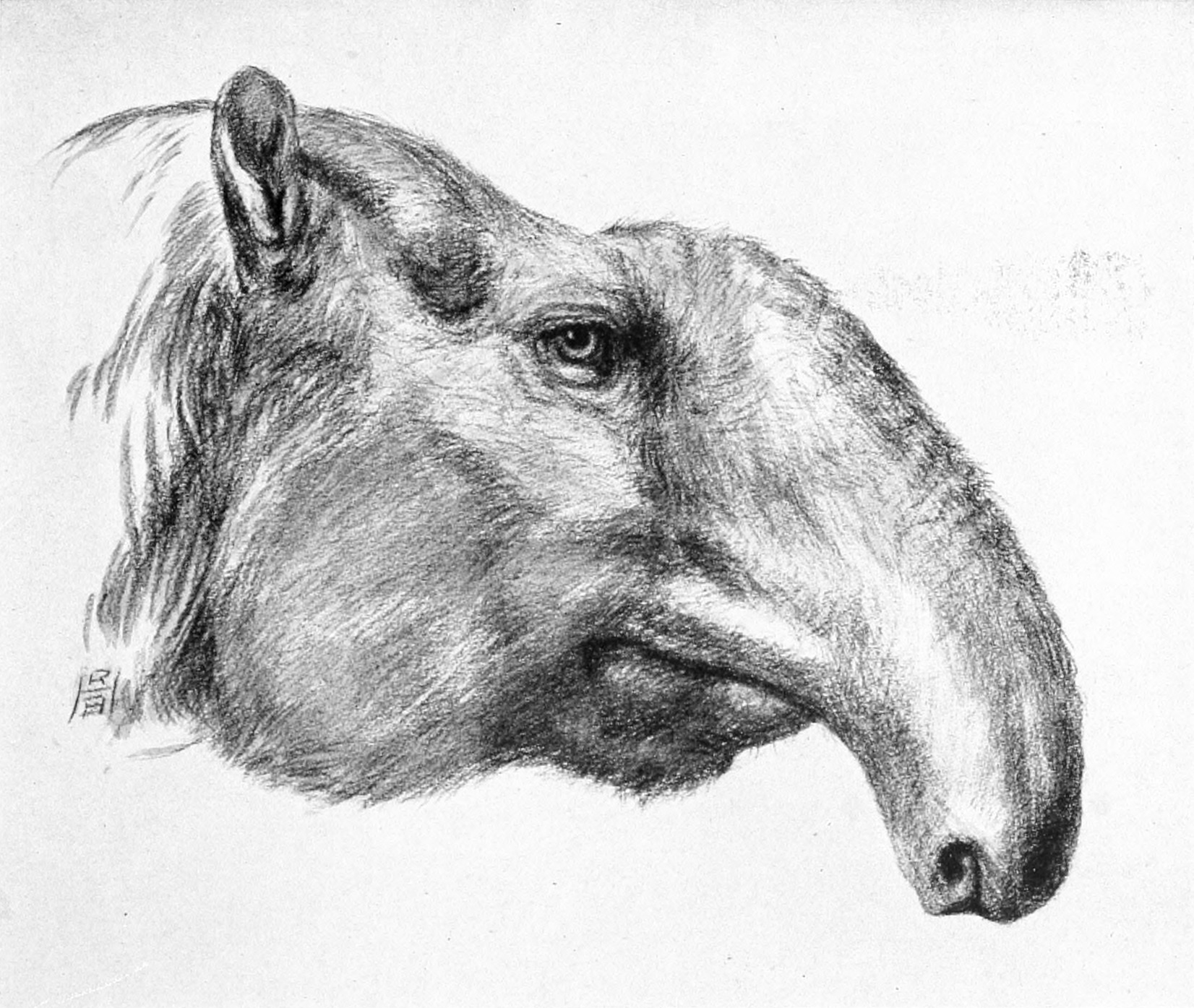|
Brachycrus
''Brachycrus'' is an extinct genus of oreodont, of the family Merycoidodontidae, endemic to North America. They lived during the Middle Miocene, 16.0—13.6 mya, existing for approximately . The long creature resembled its bigger, earlier relative ''Merycoidodon'', but was more specialized. ''Brachycrus'' had jaws which were short, and because the nostrils were placed far to the back, the creature is presumed to have had a tapir-like proboscis A proboscis () is an elongated appendage from the head of an animal, either a vertebrate or an invertebrate. In invertebrates, the term usually refers to tubular mouthparts used for feeding and sucking. In vertebrates, a proboscis is an elong .... References Oreodonts Miocene even-toed ungulates Miocene mammals of North America Fossil taxa described in 1901 Prehistoric even-toed ungulate genera {{paleo-eventoedungulate-stub ... [...More Info...] [...Related Items...] OR: [Wikipedia] [Google] [Baidu] |
Brachycrus
''Brachycrus'' is an extinct genus of oreodont, of the family Merycoidodontidae, endemic to North America. They lived during the Middle Miocene, 16.0—13.6 mya, existing for approximately . The long creature resembled its bigger, earlier relative ''Merycoidodon'', but was more specialized. ''Brachycrus'' had jaws which were short, and because the nostrils were placed far to the back, the creature is presumed to have had a tapir-like proboscis A proboscis () is an elongated appendage from the head of an animal, either a vertebrate or an invertebrate. In invertebrates, the term usually refers to tubular mouthparts used for feeding and sucking. In vertebrates, a proboscis is an elong .... References Oreodonts Miocene even-toed ungulates Miocene mammals of North America Fossil taxa described in 1901 Prehistoric even-toed ungulate genera {{paleo-eventoedungulate-stub ... [...More Info...] [...Related Items...] OR: [Wikipedia] [Google] [Baidu] |
Oreodont
Merycoidodontoidea, sometimes called "oreodonts" or "ruminating hogs", is an extinct superfamily of prehistoric cud-chewing artiodactyls with short faces and fang-like canine teeth. As their name implies, some of the better known forms were generally hog-like, and the group has traditionally been placed within the Suina (pigs, peccaries and their ancestors), though some recent work suggests they may have been more closely related to camels.Spaulding, M., O'Leary, M.A. & Gatesy, J. (2009): Relationships of Cetacea (Artiodactyla) Among Mammals: Increased Taxon Sampling Alters Interpretations of Key Fossils and Character Evolution. '' PLoS ONE'' no 4(9): e7062.article/ref> "Oreodont" means "mountain teeth", referring to the appearance of the molars. Most oreodonts were sheep-sized, though some genera grew to the size of cattle. They were heavy-bodied, with short four-toed hooves and comparatively long tails. The animals would have looked rather pig- or sheep-like, but features ... [...More Info...] [...Related Items...] OR: [Wikipedia] [Google] [Baidu] |
Merycoidodontidae
Merycoidodontoidea, sometimes called "oreodonts" or "ruminating hogs", is an extinct superfamily of prehistoric cud-chewing artiodactyls with short faces and fang-like canine teeth. As their name implies, some of the better known forms were generally hog-like, and the group has traditionally been placed within the Suina (pigs, peccaries and their ancestors), though some recent work suggests they may have been more closely related to camels.Spaulding, M., O'Leary, M.A. & Gatesy, J. (2009): Relationships of Cetacea (Artiodactyla) Among Mammals: Increased Taxon Sampling Alters Interpretations of Key Fossils and Character Evolution. '' PLoS ONE'' no 4(9): e7062.article/ref> "Oreodont" means "mountain teeth", referring to the appearance of the molars. Most oreodonts were sheep-sized, though some genera grew to the size of cattle. They were heavy-bodied, with short four-toed hooves and comparatively long tails. The animals would have looked rather pig- or sheep-like, but features ... [...More Info...] [...Related Items...] OR: [Wikipedia] [Google] [Baidu] |
William Diller Matthew
William Diller Matthew Royal Society, FRS (February 19, 1871 – September 24, 1930) was a vertebrate paleontologist who worked primarily on mammal fossils, although he also published a few early papers on mineralogy, petrological geology, one on botany, one on trilobites, and he described ''Tetraceratops insignis'', which was much later suggested to be the oldest known (Cisuralian, Early Permian) therapsid. Matthew was born in Saint John, New Brunswick, Saint John, New Brunswick, the son of George Frederic Matthew and Katherine (Diller) Matthew. His father was an amateur geologist and paleontologist who instilled his son with an abiding interest in the earth sciences. Matthew received an A.B. at the University of New Brunswick in 1889 and then earned his Ph.D. at Columbia University in 1894. Matthew was curator of the American Museum of Natural History from the mid-1890s to 1927, and director of the University of California Museum of Paleontology from 1927 to 1930. He was the fat ... [...More Info...] [...Related Items...] OR: [Wikipedia] [Google] [Baidu] |
Genus
Genus ( plural genera ) is a taxonomic rank used in the biological classification of extant taxon, living and fossil organisms as well as Virus classification#ICTV classification, viruses. In the hierarchy of biological classification, genus comes above species and below family (taxonomy), family. In binomial nomenclature, the genus name forms the first part of the binomial species name for each species within the genus. :E.g. ''Panthera leo'' (lion) and ''Panthera onca'' (jaguar) are two species within the genus ''Panthera''. ''Panthera'' is a genus within the family Felidae. The composition of a genus is determined by taxonomy (biology), taxonomists. The standards for genus classification are not strictly codified, so different authorities often produce different classifications for genera. There are some general practices used, however, including the idea that a newly defined genus should fulfill these three criteria to be descriptively useful: # monophyly – all descendants ... [...More Info...] [...Related Items...] OR: [Wikipedia] [Google] [Baidu] |
North America
North America is a continent in the Northern Hemisphere and almost entirely within the Western Hemisphere. It is bordered to the north by the Arctic Ocean, to the east by the Atlantic Ocean, to the southeast by South America and the Caribbean Sea, and to the west and south by the Pacific Ocean. Because it is on the North American Plate, North American Tectonic Plate, Greenland is included as a part of North America geographically. North America covers an area of about , about 16.5% of Earth's land area and about 4.8% of its total surface. North America is the third-largest continent by area, following Asia and Africa, and the list of continents and continental subregions by population, fourth by population after Asia, Africa, and Europe. In 2013, its population was estimated at nearly 579 million people in List of sovereign states and dependent territories in North America, 23 independent states, or about 7.5% of the world's population. In Americas (terminology)#Human ge ... [...More Info...] [...Related Items...] OR: [Wikipedia] [Google] [Baidu] |
Middle Miocene
The Middle Miocene is a sub-epoch of the Miocene Epoch made up of two stages: the Langhian and Serravallian stages. The Middle Miocene is preceded by the Early Miocene. The sub-epoch lasted from 15.97 ± 0.05 Ma to 11.608 ± 0.005 Ma (million years ago). During this period, a sharp drop in global temperatures took place. This event is known as the Middle Miocene Climate Transition. For the purpose of establishing European Land Mammal Ages The European Land Mammal Mega Zones (abbreviation: ELMMZ, more commonly known as European land mammal ages or ELMA) are zones in rock layers that have a specific assemblage of fossils (biozones) based on occurrences of fossil assemblages of Europe ... this sub-epoch is equivalent to the Astaracian age. External links GeoWhen Database - Middle Miocene .02 02 * * {{geochronology-stub ... [...More Info...] [...Related Items...] OR: [Wikipedia] [Google] [Baidu] |
Annum
A year or annus is the orbital period of a planetary body, for example, the Earth, moving in its orbit around the Sun. Due to the Earth's axial tilt, the course of a year sees the passing of the seasons, marked by change in weather, the hours of daylight, and, consequently, vegetation and soil fertility. In temperate and subpolar regions around the planet, four seasons are generally recognized: spring, summer, autumn and winter. In tropical and subtropical regions, several geographical sectors do not present defined seasons; but in the seasonal tropics, the annual wet and dry seasons are recognized and tracked. A calendar year is an approximation of the number of days of the Earth's orbital period, as counted in a given calendar. The Gregorian calendar, or modern calendar, presents its calendar year to be either a common year of 365 days or a leap year of 366 days, as do the Julian calendars. For the Gregorian calendar, the average length of the calendar year (the mea ... [...More Info...] [...Related Items...] OR: [Wikipedia] [Google] [Baidu] |
Merycoidodon
''Merycoidodon'' ("ruminating teeth") is an extinct genus of herbivorous artiodactyl of the family Merycoidodontidae, more popularly known by the name ''Oreodon'' ("hillock teeth"). It was endemic to North America during the Middle Eocene to Middle Miocene (46—16 mya) existing for approximately . Taxonomy Most researchers in paleobiology and paleontology now use the antecedent genus ''Merycoidodon'' to refer to this Oligocene epoch oreodont, even though it was once widely known by the younger synonym of ''Oreodon''. Taxonomically speaking, ''Merycoidodon'' belongs to the family Merycoidodontidae (once known as "Oreodontidae"), a group of artiodactyls related to camels that were endemic to North America. Its ancestors date back to the Eocene and its last descendants are known from the end of the Miocene, so that oreodonts, broadly speaking, lived throughout most of the Tertiary era. Morphology ''Merycoidodon'' would have somewhat resembled a pig in appearance, but had a ... [...More Info...] [...Related Items...] OR: [Wikipedia] [Google] [Baidu] |
Tapir
Tapirs ( ) are large, herbivorous mammals belonging to the family Tapiridae. They are similar in shape to a pig, with a short, prehensile nose trunk. Tapirs inhabit jungle and forest regions of South and Central America, with one species inhabiting Southeast Asia. They are one of three extant branches of Perissodactyla (odd-toed ungulates), alongside equines and rhinoceros. Only a single genus, ''Tapirus'' is currently extant. Tapirs migrated into South America during the Pleistocene epoch from North America after the formation of the Isthmus of Panama as part of the Great American Interchange. Tapirs were once widespread in North America until the arrival of humans at the end of the Late Pleistocene, around 12,000 years ago. Species There are four widely recognized extant species of tapir, all in the genus ''Tapirus'' of the family Tapiridae. They are the South American tapir, the Malayan tapir, Baird's tapir, and the mountain tapir. In 2013, a group of researchers said they ... [...More Info...] [...Related Items...] OR: [Wikipedia] [Google] [Baidu] |
Proboscis
A proboscis () is an elongated appendage from the head of an animal, either a vertebrate or an invertebrate. In invertebrates, the term usually refers to tubular mouthparts used for feeding and sucking. In vertebrates, a proboscis is an elongated nose or snout. Etymology First attested in English in 1609 from Latin , the latinisation of the Ancient Greek (), which comes from () 'forth, forward, before' + (), 'to feed, to nourish'. The plural as derived from the Greek is , but in English the plural form ''proboscises'' occurs frequently. Invertebrates The most common usage is to refer to the tubular feeding and sucking organ of certain invertebrates such as insects (e.g., moths, butterflies, and mosquitoes), worms (including Acanthocephala, proboscis worms) and gastropod molluscs. Acanthocephala The Acanthocephala or thorny-headed worms, or spiny-headed worms are characterized by the presence of an eversible proboscis, armed with spines, which it uses to pierce and ... [...More Info...] [...Related Items...] OR: [Wikipedia] [Google] [Baidu] |





.jpg)



_2.jpg)